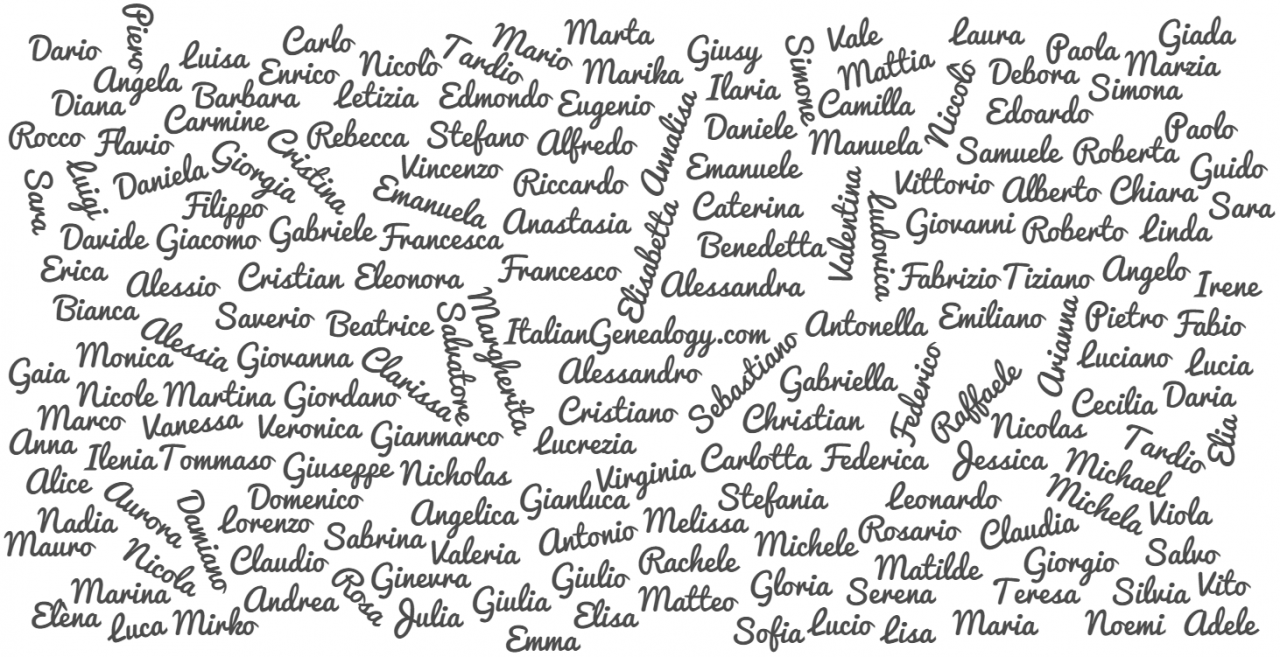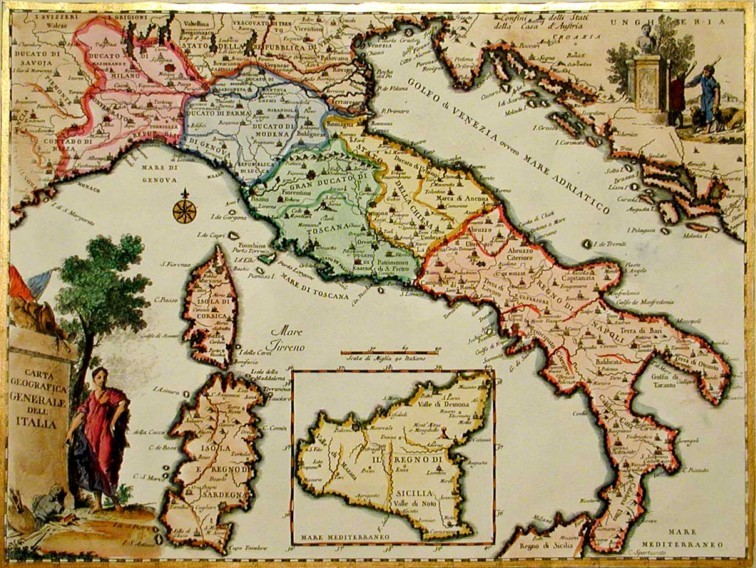Italian Naming Traditions and their Ramifications
There has been a strong custom in Italy that determines how children are named:
- The first male is named after his paternal grandfather.
- The second male is named after his maternal grandfather.
- The first female is named after her paternal grandmother.
- The second female is named after her maternal grandmother.
The subsequent children could be named after the parents, a favorite aunt or uncle, a saint or a deceased relative. You will see evidence of this tradition throughout your family tree. Although this custom is pervasive, you should never use this as a method for assuming an ancestor's name. For example, if you know that your grandfather, Francesco, was the oldest son, don't automatically assume that his paternal grandfather was named Francesco. There are exceptions to this naming custom that preclude this assumption. Let's look at a few possible exceptions.
If your ancestor had a falling out with his family and was estranged from them, he would probably not name his children after his parents. Or perhaps he was orphaned and didn't know his parents' names.
A more common exception to the naming tradition is seen in the following scenario. Giovanni Sorrentino names his first born son Luigi, after his father. He has several other children that he names according to custom. When little Luigi is about 8 years old he suddenly dies This was not uncommon. Children often did not live to adulthood in pre-twentieth-century Italy. Since he now has no child named for his father, Giovanni will give the name Luigi to his next son, who happens to be the fourth son. If you were to view this family at this time, the child who appears to be the oldest son is named after his maternal grandfather, not his paternal grandfather. The child named after his paternal grandfather is actually the fourth son. If you were to assume the names of the grandfathers in this situation, you would be wrong.
A final example of exceptions to the naming custom can be seen in the nontraditional family of my great-great-grandparents, Pasquale and Rosa. They were great opera fans who named all of their children after characters from their favorite operas. Due to theses types of exceptions, you cannot use the Italian naming tradition to assume an ancestor's name.
This naming tradition has an even more important ramification in genealogical research. Because of the pervasiveness of this custom, you will find many people sharing the same name.
Let's look at the following example:
Vito Savino marries a woman named Rosa and they have three sons, Pasquale, Domenico and Pietro, as shown in the following chart. Each of these sons marries and has his own children. According to custom, they will all name their first son Vito, after their father, and they will all name their first daughter Rosa, after their mother.We have three Vito Savinos all born in the same town, within the same generation, possibly even born in the same year. The same situation exists for Rosa Savino. And this is a greatly simplified example since most Italians in this time period had more than three children! All the children would follow this naming tradition, even the daughters, although the daughters would name the second son and second daughter after the maternal grandparents.
Now, you come along looking for the birth record of your great-great-grandfather, Vito Savino. You have answered all four W's of your research goal, so you know where and when he was born, but you do not know his parents' names. You find these three Vito Savinos, but how do you know which one is your great- great-grandfather?
An even worse situation could occur if you first find Vito Savino number two (son of Domenico) and stop searching because you assume that you have found your great-great-grandfather. Meanwhile, Vito Savino number three (son of Pietro) is really your ancestor. You now begin pursuing the ancestors of Vito Savino number two. On the paternal side you will at least be on the right track, but on his maternal side you will be barking up the wrong family tree and not even know it.
At first blush, this logic creates a frightening situation. How can you ever know if you've found the right ancestor?
Well, don't panic. There are methods you can use to insure that you're working on the right ancestor. We briefly reviewed some of these methods in a general fashion in the last chapter. Later, we will get more detailed and talk about margin notations and the appropriate sequence in which to pursue records.The important point to retain from this discussion is that due to the Italian naming tradition, you will find many people with the same names. Therefore, you must be absolutely certain to confirm that you have found your direct ancestor.
Note: from A Genealogist's Guide to Discovering Your Italian Ancestors copyright © 1997 by Lynn Nelson.



